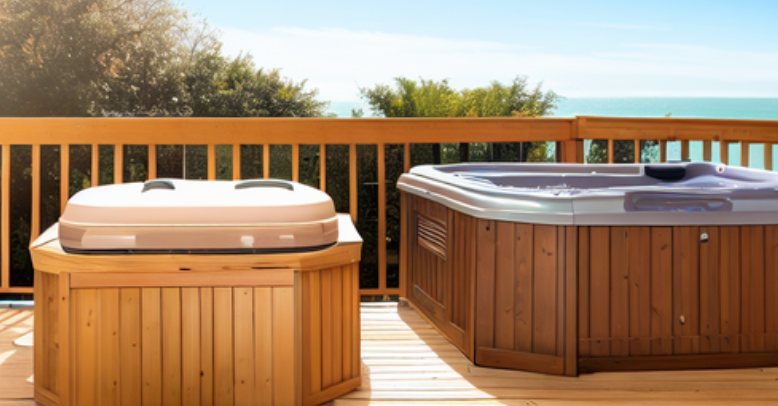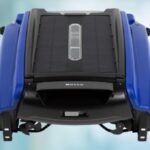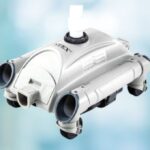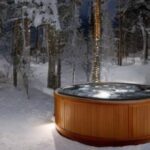I. Introduction
Hot tubs have become a popular addition to many households, offering relaxation and therapeutic benefits. With various types available in the market, it can be overwhelming to choose the right one that suits your needs and preferences. In this blog post, we will explore the six different types of hot tubs, discussing their features, advantages, and disadvantages.
Firstly, there are inflatable hot tubs which are portable and easy to set up. These budget-friendly options are perfect for those who may not have a permanent space or want the flexibility to move their hot tub around. However, they may lack some of the advanced features found in other types.
Secondly, acrylic hot tubs offer a more traditional look with their durable shells made of acrylic material. They often come equipped with powerful jets that provide an invigorating massage experience. While they tend to be more expensive than inflatable ones, they also offer better insulation and longer lifespan.
Lastly, wooden hot tubs bring a touch of rustic charm to your outdoor space. Made from high-quality wood such as cedar or redwood, these tubs blend seamlessly with nature and create a cozy atmosphere. However, they require regular maintenance due to potential water damage if not properly cared for.
Table of Contents
The growing popularity of hot tubs
One of the factors contributing to the growing popularity of hot tubs is the wide range of options available in the market. Today, there are six main types of hot tubs to choose from, each offering unique features and benefits. The first type is an acrylic hot tub, which is known for its durability and sleek appearance. It is also highly customizable and can be fitted with various jets and lighting options.
Another popular option is a wooden hot tub, which has a more rustic and natural look. These tubs are often made from cedar or redwood and offer excellent insulation properties. In addition to their aesthetic appeal, wooden hot tubs provide a relaxing environment with their warm tones and soothing scents.
For those looking for a more portable option, inflatable hot tubs have gained significant popularity in recent years. These tubs are easy to set up and take down, making them ideal for people who frequently move or have limited space.
Importance of choosing the right hot tub type
When it comes to choosing the right hot tub type, there are several important factors to consider. One of the main considerations is the size of the hot tub. Different types of hot tubs come in various sizes, so it’s crucial to choose one that can comfortably accommodate your needs and space available.
Another important factor to consider is the purpose of the hot tub. Are you looking for a relaxing and therapeutic experience, or do you want a hot tub primarily for entertainment purposes? Some types of hot tubs are designed with more jets and specialized features for therapeutic purposes, while others may prioritize features like built-in speakers and LED lights for entertainment.
The material used in constructing the hot tub is also an essential consideration. Different materials have different levels of durability, maintenance requirements, and aesthetic appeal. Whether you prefer acrylic, wood, or another material will depend on your personal preferences and budget. Ultimately, taking all these factors into account will ensure that you choose a hot tub type that matches your specific needs and preferences.
1. Inflatable Hot Tubs: Portable and easy to set up
Inflatable hot tubs have become increasingly popular among homeowners due to their portability and ease of setup. These types of hot tubs are made from durable materials such as PVC or vinyl, which allows them to be inflated and deflated as needed. This means that they can be easily moved around the yard or even taken on camping trips or vacations.
Are The Cheapest Inflatable Hot Tubs Any Good? The Best of 2022 Reviewed.
Setting up an inflatable hot tub is a simple process that requires minimal effort. Most models come with a built-in pump that inflates the tub within minutes, eliminating the need for any complicated installation or plumbing work. Once inflated, these portable hot tubs can hold anywhere from two to six people comfortably.
Despite their lightweight and portable design, inflatable hot tubs still provide all the benefits of traditional hot tubs. They typically feature powerful jets for relaxation and hydrotherapy purposes, along with heating systems that allow users to adjust the water temperature according to their preference. Additionally, many models come with added features like LED lights and built-in seats for enhanced comfort during use.
Overall, if you are looking for a convenient option that provides all the benefits of a traditional hot tub without the hassle of permanent installation, an inflatable hot tub may be the perfect choice for you. With their portability and easy setup process, these versatile units offer a cost-effective way to enjoy hydrotherapy in your own backyard or wherever your adventures take you.
Pros:
- Portability: Inflatable hot tubs are easy to transport and set up, making them suitable for various locations.
- Cost-effective: They are generally more affordable than traditional built-in hot tubs.
- Easy installation: No professional installation is required; they can be set up by anyone without the need for additional plumbing or electrical work.
- Space-saving: Inflatable hot tubs can be easily deflated and stored away when not in use, saving valuable space.
- Versatility: They come in different sizes and designs, offering a wide range of options to fit different needs and preferences.
Cons:
- Durability concerns: Compared to permanent hot tubs, inflatable ones may have a shorter lifespan due to potential punctures or wear and tear.
- Limited seating capacity: Inflatable hot tubs usually have fewer seats compared to larger built-in models, which may limit the number of people who can enjoy them at once.
- Energy usage: While they are generally more energy-efficient than traditional hot tubs, inflatable models still require electricity for heating which can increase utility costs.
- Less powerful jets: The water jets in inflatable hot
2. Portable Hard-Sided Hot Tubs
The main difference between portable and inflatable hot tubs is their construction and level of permanence. Portable hot tubs are built with rigid materials, designed for long-term use and installation, while inflatable hot tubs are soft-sided and easily movable, providing a temporary and flexible spa option.
Portable hot tubs offer numerous benefits, including the flexibility to easily relocate them according to your preferences or when moving houses. They also provide the convenience of above-ground installation, eliminating the need for extensive landscaping or construction work while still offering a relaxing and enjoyable spa experience.
Pros:
- Flexibility: Portable hot tubs can be easily relocated, allowing you to change their location within your yard or take them with you when you move houses.
- Easy Installation: They don’t require extensive landscaping or construction work, as they are above-ground and self-contained units.
Cons:
- Limited Design Options: Portable hot tubs may have fewer customization options compared to built-in models, as they come in pre-designed configurations.
- Less Permanent Structure: As above-ground units, portable hot tubs may lack the integrated aesthetic appeal and seamless integration into your landscape.
3. Rotationally Molded Hot Tubs
One of the most durable and affordable types of hot tubs available in the market is rotationally molded hot tubs. These hot tubs are made using a rotational molding process, which involves heating and rotating plastic material to create a seamless and strong structure. The durability of rotationally molded hot tubs makes them highly resistant to cracks, leaks, and other damages that may occur over time. This means that owners can enjoy their hot tub for many years without worrying about costly repairs or replacements.
Durability and Affordability
Additionally, rotationally molded hot tubs offer affordability without compromising on quality. Compared to other types of hot tubs, such as acrylic or wooden ones, rotationally molded hot tubs are generally more budget-friendly. This is because the manufacturing process for these hot tubs is less complex and requires fewer materials. However, despite their affordability, rotationally molded hot tubs still provide all the essential features needed for a relaxing and enjoyable spa experience. From powerful jets to comfortable seating arrangements, these hot tubs offer great value for money.
Overall, if you’re looking for a durable and affordable option when it comes to choosing a type of hot tub, consider going with a rotationally molded one. These versatile spa units not only withstand wear and tear but also come at an attractive price point compared to other options on the market. So sit back, relax, and let your worries melt away as you indulge in the soothing waters of your very own rotationally molded hot tub!
Pros:
- Durability: Rotationally molded hot tubs are highly durable due to their thick and strong construction, making them resistant to cracks and leaks.
- Cost-effective: They are generally more affordable compared to other types of hot tubs, making them a budget-friendly option for consumers.
- Easy maintenance: The smooth surface of rotationally molded hot tubs makes it easier to clean and maintain, reducing the time and effort required for upkeep.
- Lightweight: These hot tubs are lighter in weight compared to traditional acrylic or wooden options, allowing for easier installation and transport if necessary.
- Energy efficient: Thanks to their insulation properties, rotationally molded hot tubs can help retain heat better, leading to lower energy consumption.
Cons:
- Limited design options: Rotationally molded hot tubs typically have simpler designs with fewer customization options compared to acrylic or wooden counterparts.
- Less visually appealing: Some may find the appearance of rotationally molded hot tubs less aesthetically pleasing than other types available in the market.
- Limited seating capacity: Due to their construction method, these hot tubs usually have smaller seating capacities compared to larger acrylic models.
- Lower jet performance: Rotationally molded hot tubs may
Key Takeaway
Rotationally molded hot tubs offer a budget-friendly choice without compromising on durability and functionality.
4. Inground Hot Tubs, Overview and Advantages
Inground hot tubs offer a luxurious and sophisticated way to unwind and relax in the comfort of your own backyard. These types of hot tubs are designed to be installed into the ground, seamlessly integrating with the surrounding landscape. One of the main advantages of an inground hot tub is its aesthetic appeal. By being embedded into the ground, it creates a sleek and polished look that blends harmoniously with the overall design of your outdoor space.
Furthermore, inground hot tubs provide a wide range of customization options for design preferences. From selecting different shapes, sizes, and materials to choosing various features like lighting or water jets, homeowners can tailor their hot tub to suit their specific tastes and needs. This level of customization allows for a truly personalized experience that complements your existing outdoor décor while also reflecting your individual style.
Overall, inground hot tubs offer both functionality and beauty by seamlessly integrating with the surrounding landscape while also providing ample opportunities for customization. Whether you prefer a minimalistic design or a more extravagant one, an inground hot tub can transform your backyard into a private oasis where you can escape from daily stresses and indulge in ultimate relaxation.
Pros:
- Inground hot tubs offer a sleek and sophisticated aesthetic to any outdoor space.
- They can be designed to seamlessly blend with the surrounding landscape, enhancing the overall visual appeal.
- Inground hot tubs provide better insulation, helping to retain heat and reduce energy costs.
- They offer more privacy as they are typically built into the ground, shielding users from prying eyes.
- The durability of inground hot tubs is generally higher than above-ground alternatives, ensuring longer-lasting enjoyment.
Cons:
- Building an inground hot tub requires extensive construction work and may involve excavation, which can be time-consuming and costly.
- Relocation or removal of an inground hot tub is challenging due to its permanent nature.
- Inground hot tubs often have higher installation costs compared to above-ground options due to the additional labor and materials required for construction.
- Maintenance and repairs for inground hot tubs may be more complex due to their embedded design, potentially leading to higher expenses in the long run.
- The customization options for an inground hot tub are limited once it has been installed since modifications require significant effort or even complete reconstruction of the unit.
5. Swim-Spa Combo Hot Tubs
Swim-spa combo hot tubs offer a unique dual functionality that combines the benefits of both a swimming pool and a hot tub. These hybrid models are designed to provide users with the ability to enjoy both invigorating exercise and soothing relaxation in one convenient unit.
Dual Functionality and Benefits
One of the key advantages of swim-spa combo hot tubs is their versatility. With adjustable water currents, users can easily switch between swimming laps against a gentle current for an effective workout or simply relax in the spacious heated spa area. This flexibility makes swim-spa combos suitable for individuals who desire both fitness and leisure activities without sacrificing space or investing in separate installations.
Moreover, these hot tubs offer numerous health benefits. The hydrotherapy functions found in most swim-spas help relieve muscle tension, improve circulation, reduce stress levels, and promote overall well-being. The combination of controlled water jets for hydrotherapy alongside its swimming capabilities provides an all-in-one solution for those seeking physical activity combined with therapeutic benefits.
In summary, swim-spa combo hot tubs provide a versatile solution that caters to both exercise enthusiasts and individuals looking for relaxation therapy within a single unit. Their dual functionality offers options for various levels of physical activity while also providing ample space to unwind and enjoy hydrotherapy features. By offering the best of both worlds, these innovative hybrid models have become increasingly popular among homeowners seeking convenience and value in their outdoor living spaces.
Pros:
- Versatility: Swim-spa combo hot tubs offer the flexibility of both a relaxing hot tub and a swim-in-place feature, providing the benefits of hydrotherapy and exercise in one unit.
- Space-saving: These units eliminate the need for separate installations of a swimming pool and a hot tub, making them ideal for smaller outdoor spaces or homes with limited area.
- Health benefits: Regular use of swim-spa combo hot tubs can improve cardiovascular fitness, aid in weight loss, promote muscle relaxation, and relieve joint pain.
- Customizable features: Many models come with adjustable water jets, temperature controls, and other features that can be tailored to individual preferences for an optimal spa experience.
- Entertainment value: Swim-spa combos often include built-in sound systems or connectivity options, creating a fun environment for socializing or entertainment while enjoying the water.
Cons:
- Cost: Swim-spa combo hot tubs tend to have higher price tags compared to traditional standalone hot tubs due to their additional functionality and larger size.
- Maintenance requirements: Keeping both the swimming pool and hot tub components clean can be more time-consuming and may require specialized equipment or chemicals compared to regular maintenance of standalone hot tubs.
6. Wooden Hot Tubs
One type of hot tub that exudes rustic charm and natural beauty is the wooden hot tub. Made from high-quality wood such as cedar or redwood, these tubs offer a unique and visually appealing addition to any backyard or outdoor space. The natural grains and textures of the wood create a warm and inviting atmosphere, perfect for relaxation.
Rustic Charm and Natural Beauty
Wooden hot tubs also provide a more traditional experience compared to their modern counterparts. With no jets or complicated controls, these tubs focus on simplicity and immersion in nature. They allow you to fully enjoy the therapeutic benefits of soaking in warm water while being surrounded by the calming presence of natural materials.
Moreover, wooden hot tubs are highly durable and can withstand various weather conditions. Properly maintained, they can last for many years, making them a worthwhile investment for those seeking both functionality and aesthetic appeal in their outdoor oasis. Whether nestled among trees or placed on a deck overlooking a scenic landscape, wooden hot tubs truly embody rustic charm and offer an authentic experience that connects us with nature.
Pros:
- Natural and aesthetic appeal: Wooden hot tubs have a rustic and charming appearance that enhances the overall ambiance of your outdoor space.
- Soothing warmth: Wood is an excellent insulator, ensuring that the hot tub retains heat for longer periods, allowing you to enjoy a relaxing soak for extended durations.
- Durability: High-quality wooden hot tubs are built to last, with strong construction materials such as cedar or teak wood that can withstand harsh weather conditions.
- Environmentally friendly: Wooden hot tubs are often made from sustainable materials, making them an eco-friendly choice compared to other types of hot tubs made from synthetic materials.
- Customization options: Wood can be easily customized and modified according to your preferences, allowing you to create a unique and personalized hot tub experience.
Cons:
- Maintenance requirements: Wooden hot tubs require regular maintenance such as sealing and treating the wood to prevent mold, rotting, or warping due to exposure to water and weather elements.
- Higher initial cost: Compared to some alternative materials like plastic or fiberglass, wooden hot tubs tend to have a higher upfront cost due to the quality of wood used in their construction.
- Weight limitations: Depending on
Conclusion: The Ultimate Guide to Types of Hot Tubs
Hot tubs offer a variety of options to cater to different preferences, ranging from portable inflatable tubs to charming wooden tubs and versatile swim-spa combos.
Choosing the right hot tub is crucial, considering factors such as size, purpose, and material, whether you seek therapeutic benefits, entertainment value, or a connection with nature.
By exploring the ultimate guide to hot tub types, you can create your own stress-melting haven and immerse yourself in a world of relaxation, indulgence, and pure bliss.
Discover the ideal hot tub that speaks to your soul and immerse yourself in a world of pure relaxation. Your ultimate oasis awaits.






